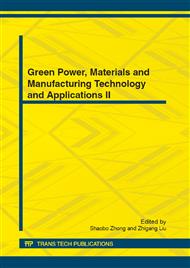[1]
C.W. Tang, H. J. Chen, Y. Yen. Modeling the confinement efficiency of reinforced concrete columns with rectilinear transverse steel using artificial neural networks. Journal of Structural Engineering, ASCE, 2003, 129(6):775-783.
DOI: 10.1061/(asce)0733-9445(2003)129:6(775)
Google Scholar
[2]
N. N. Lessig. Theoretical and experimental investigation of reinforced concrete elements subjected to combined bending and torsion, Theory of design and construction of reinforced concrete structures, Moscow, 1958.
Google Scholar
[3]
T. T. C. Hsu. Torsion of structural concrete-behavior of reinforced concrete rectangular members, Torsion of Structural Concrete, SP-18. American Concrete Institute, Detroit, 1968.
DOI: 10.14359/51728293
Google Scholar
[4]
ACI Committee 318, Building code requirements for structural concrete (ACI 318-89). American Concrete Institution, Detroit, MI, U.S.A. 1989.
DOI: 10.1061/(asce)1076-0431(1996)2:3(120.3)
Google Scholar
[5]
C. Yeh. Design of high-performance concrete mixture using neural networks and nonlinear programming. Journal of Computing in Civil Engineering, ASCE, 1999, 13(1):36-42.
DOI: 10.1061/(asce)0887-3801(1999)13:1(36)
Google Scholar
[6]
M. Sheikhan, B. Movaghar. Exchange rate prediction using an evolutionary connectionist model. World Applied Sciences Journal, 2009, 7:8-16.
Google Scholar
[7]
J. Principe, C. Lefebvre, G. Lynn, C. Fancourt, D. Wooten. Neuro Solutions Documentation. Neuro Dimension Incorporation (http://www.neurosolutions.com), 2009.
Google Scholar
[8]
N. E. Koutchoukali, A. Belarbi. Torsion of High-strength reinforced concrete beams and minimum reinforcement requirement. ACI Structural Journal, 2001, 98(4):462-469.
DOI: 10.14359/10289
Google Scholar
[9]
C. W. Tang. Using neural networks to predicate torsional strength of reinforced concrete beams. The 8th national conference on structure engineering, Taiwan, 2006.
Google Scholar
[10]
I. K. Fang, J. K. Shiau. Torsional behavior of normal- and high-strength concrete beams. ACI Structural Journal, 2004, 101(3):304-313.
DOI: 10.14359/13090
Google Scholar
[11]
L. J. Rasmussen, G. Baker. Torsion in reinforced normal and high-strength concrete beams part 1: experimental test series. ACI Structural Journal, 1995, 92(1):56-62.
DOI: 10.14359/1476
Google Scholar


